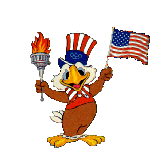Practice preventative management -
Keep plantings healthy by providing appropriate cultural care. Most plant problems are caused by inappropriate growing conditions rather than pests or diseases. If a plant requires substantial inputs of fertilizers or pest control, consider replacing it with a species better suited to existing site conditions. Minimize green waste, and reuse any that you create onsite as compost or mulch. Reduce expenses by minimizing irrigation and chemical input requirements.
Checklist for Discouraging Plant Diseases:
-
Select suitable location for planting
-
Practice annual rotation
-
Select disease resistant varieties, disease free seeds and transplants
-
Use correct soil structure, fertility and pH
-
Don’t overcrowd plants
-
Water properly
-
Control insect pests
-
Destroy or remove diseased plants
-
Be alert to leaf disease
INTEGRATED PEST MANAGEMENT (IPM)
IPM is a coordinated decision-making and action
process that uses the most appropriate landscape
management methods and strategies to achieve
maintenance program goals and objectives in an
environmentally-sound manner. IPM seeks to prevent
pests by fostering a healthy garden environ-
ment where individual plants have the strength to
resist disease and insect infestations, and to outcompete
weeds.
• Monitor landscape condition regularly.
• Determine acceptable plant injury levels and set
action thresholds. It is critical to have clients
accept some pest presence to supply food sources
to support beneficial insect populations.
• Identify and learn the life cycle of pests so that
you can minimize their reproduction and damage.
You can also use beneficial insects that naturally
target these pests.
• Use proper timing of maintenance efforts.
Use beneficial insects or apply pesticides when
pests are most susceptible, not after they have
flown away.
• Select the least disruptive control and most
effective revegetation tactics.
• Evaluate and revise efforts.
Start with an evaluation of site needs. Consider soil
testing every 3-5 years to see if soils have enough
nutrients and the proper pH to support desired
plant communities. Use mechanical means to control
pests and disease. If mechanical means aren’t
feasible, consider biological methods of control. As
a last resort, IPM practitioners use chemical control
that has the least environmental impact.
1) Raise pest tolerance. Encourage your customer to
accept a higher level of pest presence and plant
damage. Set the expectation that a yard should
always have some pests to keep beneficial insects
fed. Educate customers about the level of damage a
plant can take and still thrive. Identify key pests,
key plants, and key locations that incur greatest
pest damage and drive costs.
2) Establish thresholds for action. Work with your
customer to identify triggers for various activities.
Thresholds can be based on visual observations such
as amount of plant damage, overall health of
plants or general appearance of plants. Some
actions, like applying fertilizer, may be based on
We proudly follow...
measurement results from soils tests or atmospheric
conditions like amount of rainfall. It is likely that
you will be inspecting the site more and
providing corrective actions less often. Ask these
questions when faced with a pest or disease:
a) What can be done to reduce the need for future
intervention?
b) How can you prevent or avoid these losses
and expenses?
c) Can hardier plants replace susceptible species?
3) Monitor the site to confirm the type of pest or
weed present and its appropriate life cycle stage.
If the pest is in the flying stage, and the larval stage
is really what harms plants, you may be too late to
prevent plant damage. You may need to consult a
master gardener, botanic specialist or diagnostic
lab for specific pest identification and information.
Many pests can be controlled by manipulating
their habitat – making it wetter, dryer, sunnier,
shadier etc.
a) Living organisms (insects, diseases or pathogens)
usually damage leaves or needles in a random pattern.
Frost or toxic chemicals produce more regular
damage patterns.
b) Signs of viral diseases include vein clearing (lack
of chlorophyll), growth inhibition or distortion.
c) Soft bodied insects are generally more easily controlled
than hard bodied insects. Immobile insects
are easier to control than flying ones.
d) Beware of misidentifying larger pest species. The
mole, not the vole or gopher, is the most common
yard pest. Reducing their desired habitat area, such
as lawns, will often help eliminate the pest.
e) A good rule of thumb for distinguishing between
pests and beneficial species is to look at parts of the
mouth. If the insect’s jaws point down, they eat
plants. If the jaws point out, they are predators and
a beneficial species worth protecting.
4) Keep records. Monitor regularly, and document
observations. Regular record keeping that is convenient
to use and easily accessed is critical to the
long-term success of an IPM program.
Less than 1% of insect species are
serious pests that affect humans –
Oregon/Washington Master Gardener handbook.
Stable natural ecosystems control more
than 95% of the potential crop pests and
carriers of human disease – Sustainable Sites
Initiative Guidelines and Performance Benchmarks 2009.
PLEASE NOTE: We DO NOT use any pesticides on any of our properties that we maintain by default. We will ONLY use pesticides if specifically requested by the customer, HOWEVER WE WILL ONLY DO SO BY FOLLOWING IPM and only as a last resort.
ECObiz Landscape Maintenance Practices
INTEGRATED PEST MANAGEMENT (IPM)


